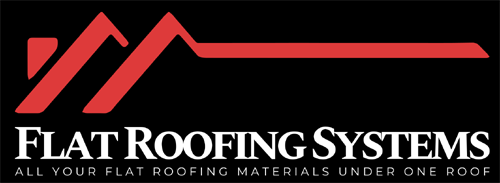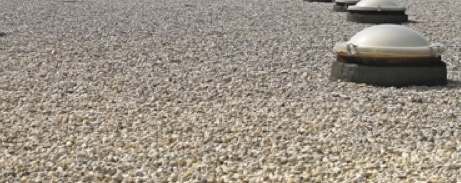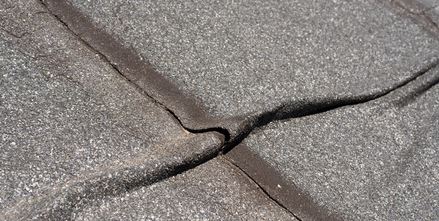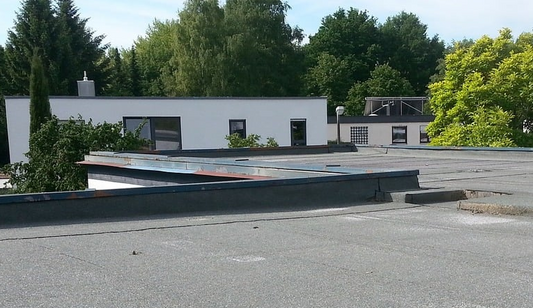Insulation beneath EPDM flat roofs creates an essential thermal barrier that greatly improves your building's energy efficiency. It prevents heat transfer, maintains stable indoor temperatures, and protects the membrane from temperature extremes. When paired with high R-value materials like polyisocyanurate or extruded polystyrene, your EPDM system can deliver exceptional performance and cost savings throughout its 50+ year lifespan. Proper installation and regular maintenance will maximize these benefits for decades to come.
Key Points
- Insulation beneath EPDM membranes significantly reduces heat transfer, maintaining stable indoor temperatures year-round.
- Proper insulation protects EPDM roofing from temperature extremes and prevents condensation damage.
- Compatible insulation materials include polyisocyanurate, extruded polystyrene, spray foam, and mineral wool.
- Insulated EPDM systems lower energy costs by reducing heating needs in winter and cooling demands in summer.
- Installation requires thorough roof inspection, appropriate R-value selection, and proper vapor barrier application.
Understanding Thermal Performance of EPDM Roofing Systems
When evaluating flat roofing options for commercial buildings, understanding the thermal performance of EPDM systems becomes essential for making informed decisions.
EPDM provides exceptional thermal insulation that effectively stabilizes internal temperatures by reducing heat transfer through your roof structure.
EPDM's superior thermal insulation creates stable indoor environments by minimizing heat exchange through your commercial roofing system.
You'll find that EPDM's dark surface works to your advantage in colder climates by absorbing heat, potentially decreasing your energy costs through reduced reliance on heating systems.
To maximize roof insulation benefits, consider pairing your EPDM membrane with high R-value materials such as rigid or spray foam insulation.
The insulative properties of EPDM remain effective throughout its long lifespan, often exceeding 50 years when properly maintained.
Remember that regular inspections and cleaning are critical for preserving thermal performance and preventing issues like water pooling that can compromise your flat roofing's energy efficiency.
Benefits of Proper Insulation Beneath EPDM Membranes
Beyond the inherent thermal properties of EPDM membranes themselves, the insulation layer beneath your roofing system delivers substantial performance advantages.
When properly installed between the roof deck and EPDM membrane, high-quality insulation transforms your building's thermal resistance profile.
- Energy efficiency improvements – You'll experience reduced heat loss in winter and minimized heat gain in summer, resulting in lower utility costs for both commercial and residential buildings.
- Enhanced indoor temperature stability – The combination of EPDM roofing with high R-value insulation properties maintains consistent comfort levels year-round.
- Extended membrane lifespan – Proper insulation protects your EPDM roofing from temperature extremes and condensation damage.
- Environmental sustainability – You'll reduce reliance on non-renewable energy sources while supporting net zero energy goals.
Regular maintenance and inspections guarantee these benefits continue throughout the system's lifetime.
Types of Insulation Materials Compatible With EPDM
Selecting the right insulation material for your EPDM flat roof system greatly impacts overall thermal performance and energy efficiency.
- Rigid foam insulation options include polyisocyanurate (offering the highest R-value per inch), extruded polystyrene (XPS), and expanded polystyrene (EPS), all providing excellent thermal resistance beneath EPDM roofing.
- Spray foam insulation creates a seamless barrier, effectively sealing gaps while complementing EPDM membranes.
- Insulated roof panels combine insulative cores with protective facings for streamlined installation.
- Mineral wool insulation delivers both thermal protection and sound dampening benefits in EPDM applications.
When choosing insulation materials, you'll need to take into account R-value requirements, moisture control capabilities, installation methods, and budget constraints to guarantee ideal compatibility with your EPDM roofing system.
Installation Best Practices for EPDM With Insulation
Proper installation of insulation with EPDM flat roofing systems requires meticulous attention to detail and adherence to industry standards to maximize energy efficiency and roof longevity.
Before beginning your project, consider these critical steps:
- Conduct thorough roof inspections of your existing roof to identify and repair any damage or leaks that could compromise your new installation's thermal performance.
- Install appropriate insulation based on R-value requirements, ensuring it's compatible with EPDM Rubber Roofing for peak energy efficiency.
- Apply a vapor barrier on the warm side of the insulation to prevent moisture buildup that can degrade both insulation and the roofing system over time.
- Ensure proper ventilation throughout the installation process and consider professional installation to guarantee compliance with building regulations and maximize durability.
Energy Efficiency and Cost Savings From Insulated EPDM Roofs
Energy efficiency represents one of the most compelling advantages of properly installed EPDM roof systems with quality insulation. Your insulated EPDM roofs considerably reduce heat transfer, lowering energy consumption year-round—decreasing heating costs in winter while minimizing artificial cooling needs in summer.
The dark surface of EPDM roofing absorbs heat in colder climates, further reducing your heating expenses.
When you pair EPDM with high R-value insulation materials, you'll achieve maximum energy efficiency and substantial cost savings on utility bills. The durable properties of this combination extend the lifespan of the roof while delivering long-term financial benefits.
Regular maintenance remains essential for sustaining these efficiency gains. Schedule periodic inspections and cleaning to prevent moisture accumulation that could compromise insulation performance and lead to costly repairs, ensuring your investment continues delivering returns.
Rounding Up
You'll maximize your EPDM flat roof's performance by selecting appropriate insulation materials and following proper installation protocols. When correctly implemented, the insulation-EPDM system will considerably reduce energy consumption, extend membrane lifespan, and provide substantial long-term cost savings. Don't overlook the technical specifications of thermal resistance values and compatibility factors—they're critical to achieving ideal building envelope performance and regulatory compliance.




